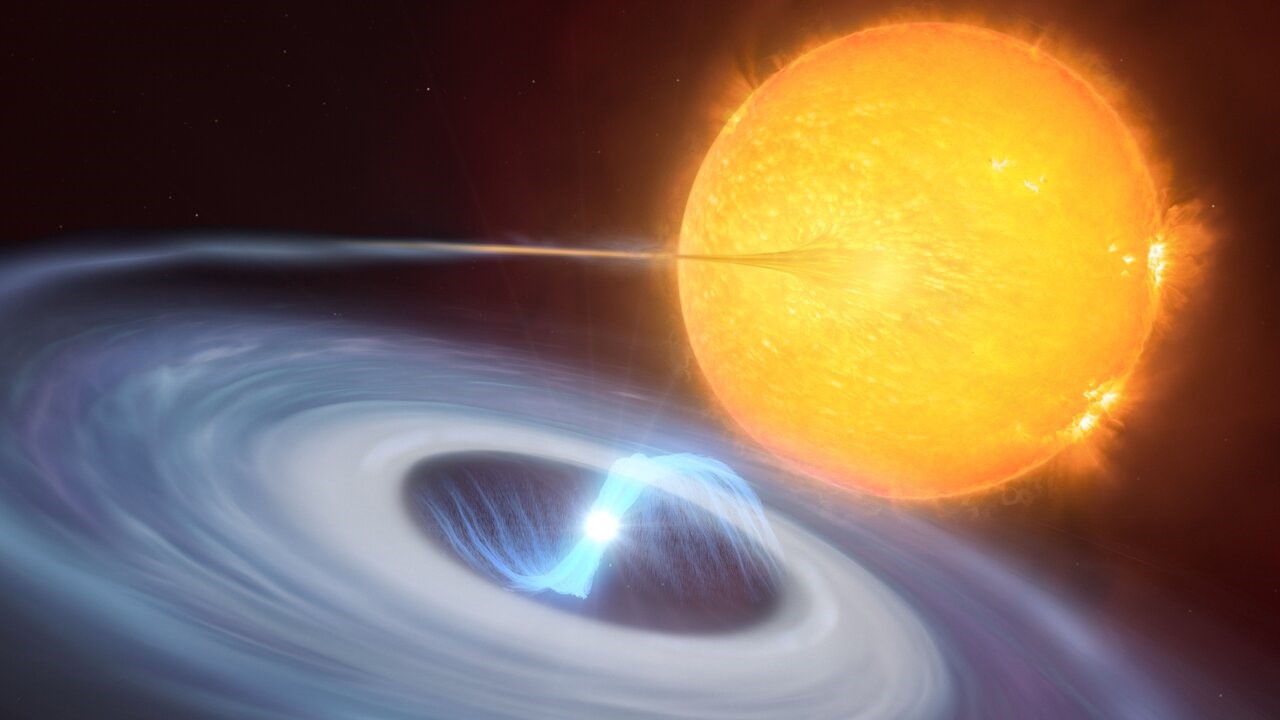Pow! Scientists spot new 'micronova' stellar explosion
Blink and you'll miss it!
An international team of astronomers has observed and identified a new type of stellar explosion — a micronova.
Using the European Southern Observatory's (ESO) Very Large Telescope (VLT), the researchers witnessed never-before-seen small thermonuclear explosions on white dwarf stars that lasted only a matter of hours. A white dwarf is the dense core of a star like our sun that has run out of fuel but does not explode, as a larger star would.
When a white dwarf is paired with a larger star, it can steal away hydrogen from its companion. Eventually, that hydrogen fuses into helium in a massive thermonuclear explosion called a nova. "Such detonations make the entire surface of the white dwarf burn and shine brightly for several weeks," astronomer Nathalie Degenaar at the University of Amsterdam, the Netherlands, a co-author of a study describing the new micronova observations, said in an ESO press release.
Supernova photos: Great images of star explosions

But when analyzing data from NASA's Transiting Exoplanet Survey Satellite (TESS), researchers observed bright flashes that only lasted a few hours at a time on the surface of stars. Using ESO's VLT, they confirmed that these small explosions were a new type of nova occurring in specific regions of white dwarfs.
"For the first time, we have now seen that hydrogen fusion can also happen in a localized way. The hydrogen fuel can be contained at the base of the magnetic poles of some white dwarfs, so that fusion only happens at these magnetic poles," astronomer Paul Groot of Radboud University in the Netherlands, who co-authored the study, said in the statement. "This leads to micro-fusion bombs going off, which have about one-millionth of the strength of a nova explosion, hence the name micronova."
Despite the term "micro" in their name, micronovas are still extremely powerful explosions. The researchers theorized that a single micronova burns through about 44,000,000 trillion pounds (20,000,000 trillion kilograms) — the equivalent of 3.5 billion Great Pyramids of Giza.
Get the Space.com Newsletter
Breaking space news, the latest updates on rocket launches, skywatching events and more!
Though scientists have seen only three such events thus far, the researchers think micronovas may be happening regularly across the galaxy and simply evading detection. "These events may actually be quite common, but because they are so fast they are difficult to catch in action," astronomer Simone Scaringi of Durham University in the U.K., who led the study, said in the statement.
As such, the team hopes to use large-scale surveys to find and study more micronovas.
A paper describing the researchers' observations was published Wednesday (April 20) in the journal Nature.
Follow Stefanie Waldek on Twitter @StefanieWaldek. Follow us on Twitter @Spacedotcom and on Facebook.
Join our Space Forums to keep talking space on the latest missions, night sky and more! And if you have a news tip, correction or comment, let us know at: community@space.com.

Space.com contributing writer Stefanie Waldek is a self-taught space nerd and aviation geek who is passionate about all things spaceflight and astronomy. With a background in travel and design journalism, as well as a Bachelor of Arts degree from New York University, she specializes in the budding space tourism industry and Earth-based astrotourism. In her free time, you can find her watching rocket launches or looking up at the stars, wondering what is out there. Learn more about her work at www.stefaniewaldek.com.









